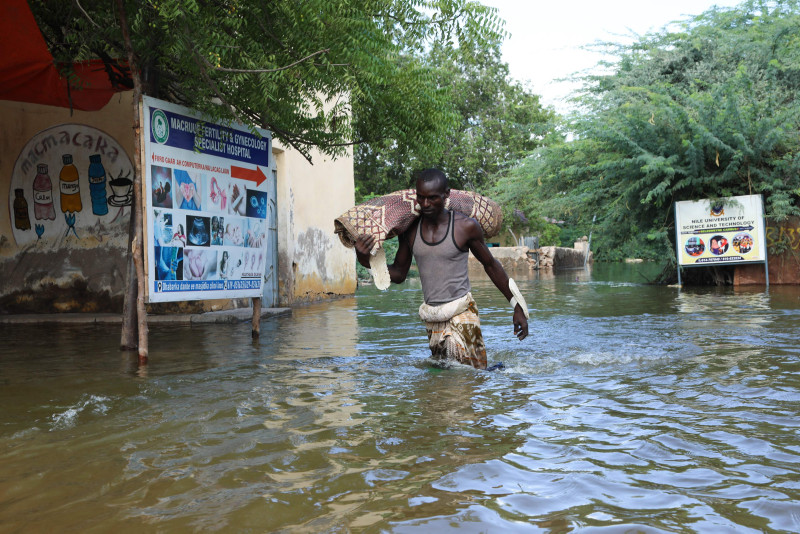In a region already reeling from the aftermath of a severe drought, East Africa, particularly Somalia, Kenya, and Ethiopia, is now facing a new catastrophe.
Heavy rainfall has triggered widespread flooding, and scientists from the World Weather Attribution (WWA) group have labeled the recent rainfall as “one of the most intense ever recorded in the region” between October and December.
The WWA report highlights that climate change played a significant role in intensifying the heavy rainfall, making it up to two times more severe.
The exact contribution of global warming remains uncertain. The Indian Ocean Dipole (IOD), a climate system determined by differences in sea surface temperature, also contributed to “unusually extreme” rainfall, according to the report.
The scientists caution that as long as the planet continues to warm, such extreme rainfall events are likely to become more frequent in East Africa.
The Horn of Africa is identified as one of the regions most vulnerable to climate change, despite its minimal contribution to global carbon emissions.
The recent prolonged drought exacerbated the impact of the devastating rainfall, creating challenges for many affected communities in the region.
A report from the UN World Food Programme (WFP) published on Thursday underscores the threat to food security across eastern Africa due to the “devastating floods.”

The heavy rains, 140 percent above average, have resulted in the destruction of property, infrastructure, crops, and the loss of livestock.
The scientists urgently call for the phasing out of fossil fuels and emissions reduction, emphasizing that extreme weather events have the potential to overwhelm the response of governments and humanitarian organizations in East Africa.
The impact of the floods is staggering, displacing more than two million people in East Africa, with Somalia being the hardest hit.
The disaster has claimed over 100 lives in Somalia, at least 165 in Kenya, and 57 in Ethiopia. In the Somali region of eastern Ethiopia, cholera has emerged as a deadly threat, with at least 23 fatalities and over 700 confirmed cases.
In Somalia, over 750,000 people, including women and children, have been displaced from their homes, according to the UN.
The situation is unfolding as millions of Somalis continue to battle hunger and malnutrition, with an estimated 1.5 million children under the age of five facing acute malnutrition between August and next July.
Humanitarians warn that they will not be able to meet current and emerging needs without additional resources.
A $2.6 billion plan to support 7.6 million people this year is only 42 percent funded.
As extreme weather events continue to occur with increased frequency and intensity, the East African nations face the urgent need for coordinated efforts to address the immediate humanitarian crisis, as well as long-term strategies to build resilience in the face of a changing climate.
